labor
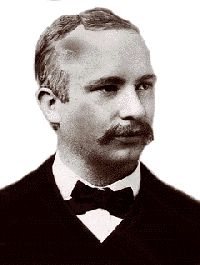 Federal holidays are celebrated for a number of reasons. Labor Day is a federal holiday in the United States celebrated on the first Monday in September. PJ McGuire, Vice President of the American Federation of Labor, is frequently credited as the father of Labor Day in the United States. The day was designed to honor and recognize the American labor movement, as well as the works and contributions of laborers to the development and achievements of the United States. Of course, many people simply look at these “three-day weekend” holidays as a great day to go out of town, sleep in on a normal workday, barbecue, or play golf or some other sport. That wasn’t exactly the plan with these, but many of them do have special events attached to them, such as parades or other celebrations.
Federal holidays are celebrated for a number of reasons. Labor Day is a federal holiday in the United States celebrated on the first Monday in September. PJ McGuire, Vice President of the American Federation of Labor, is frequently credited as the father of Labor Day in the United States. The day was designed to honor and recognize the American labor movement, as well as the works and contributions of laborers to the development and achievements of the United States. Of course, many people simply look at these “three-day weekend” holidays as a great day to go out of town, sleep in on a normal workday, barbecue, or play golf or some other sport. That wasn’t exactly the plan with these, but many of them do have special events attached to them, such as parades or other celebrations.
Labor Day began in the late 19th century, with the first Labor Day being Tuesday, September 5, 1887. As the trade union and labor movements grew, trade unionists proposed that a day be set aside to celebrate labor. “Labor Day” was promoted by the  Central Labor Union and the Knights of Labor, which organized the first parade in New York City. Still, it was not celebrated everywhere at that time. In 1887, Oregon was the first state of the United States to make it an official public holiday. Labor Day didn’t become an official federal holiday, until 1894, when thirty states in the US officially celebrated Labor Day. Of course, these holidays didn’t get changed to “Monday Holidays” until the enactment of the Uniform Monday Holiday Act on enacted June 28, 1968. At that time, that made Washington’s Birthday and Memorial Day, as well as Columbus Day permanently on a Monday.
Central Labor Union and the Knights of Labor, which organized the first parade in New York City. Still, it was not celebrated everywhere at that time. In 1887, Oregon was the first state of the United States to make it an official public holiday. Labor Day didn’t become an official federal holiday, until 1894, when thirty states in the US officially celebrated Labor Day. Of course, these holidays didn’t get changed to “Monday Holidays” until the enactment of the Uniform Monday Holiday Act on enacted June 28, 1968. At that time, that made Washington’s Birthday and Memorial Day, as well as Columbus Day permanently on a Monday.
Of all the holidays that are celebrated on Mondays, Labor Day is probably the one that really is somewhat designed for a “three-day weekend” kind of celebration. We were, after all celebrating workers and all they had 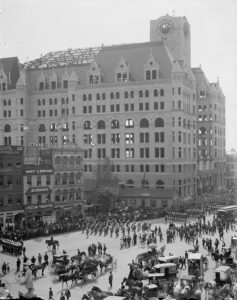 accomplished. When Labor Day was proposed, there was disagreement among labor unions about when a holiday celebrating workers should be. Some people advocated for continued emphasis of the September march-and-picnic date, while others wanted the designation of the more politically charged date of May 1. If you ask me, a May 1st picnic day has a much greater chance of getting rained out, than a September date, but that’s just my opinion. In the end, the September date won out, and now Labor Day is often viewed the “unofficial end of summer” because it marks the end of the cultural summer season. Many take their two-week vacations during the two weeks ending Labor Day weekend. Many fall activities, such as school and sports (particularly football), begin about this time. I’m not sure how many people really think about the labor side of the holiday at all. Nevertheless, they all enjoy the three-day weekend, and all the fun it includes.
accomplished. When Labor Day was proposed, there was disagreement among labor unions about when a holiday celebrating workers should be. Some people advocated for continued emphasis of the September march-and-picnic date, while others wanted the designation of the more politically charged date of May 1. If you ask me, a May 1st picnic day has a much greater chance of getting rained out, than a September date, but that’s just my opinion. In the end, the September date won out, and now Labor Day is often viewed the “unofficial end of summer” because it marks the end of the cultural summer season. Many take their two-week vacations during the two weeks ending Labor Day weekend. Many fall activities, such as school and sports (particularly football), begin about this time. I’m not sure how many people really think about the labor side of the holiday at all. Nevertheless, they all enjoy the three-day weekend, and all the fun it includes.
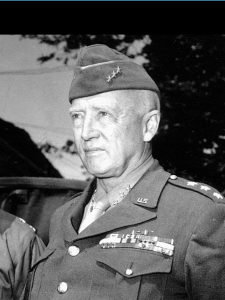 In many of the wars there have been in our world, one thing seems to be a constant…the atrocities against prisoners of war, and even the citizens of the evil nations we are fighting against. World War II probably saw some of the worst atrocities, during the Holocaust. It was during that time that prison camps like Auschwitz-Birkenau, Buchenwald, Chelmno, Dachau, and Terezin, just to name a few, were used either for the murder of Jews and anyone else Hitler felt was not of the standard of people he thought they should be, or the prisoners they held were used as forced labor.
In many of the wars there have been in our world, one thing seems to be a constant…the atrocities against prisoners of war, and even the citizens of the evil nations we are fighting against. World War II probably saw some of the worst atrocities, during the Holocaust. It was during that time that prison camps like Auschwitz-Birkenau, Buchenwald, Chelmno, Dachau, and Terezin, just to name a few, were used either for the murder of Jews and anyone else Hitler felt was not of the standard of people he thought they should be, or the prisoners they held were used as forced labor.
Buchenwald was not an Annihilation camp, but that doesn’t mean that it was a easy existence. The Germans were not good to their prisoners. Prisoners from all over Europe and the Soviet Union…Jews, Poles and other Slavs, the mentally ill and physically-disabled from birth defects, religious and political prisoners, Roma and Sinti, Freemasons, Jehovah’s Witnesses (then called Bible Students), criminals, homosexuals, and prisoners of war, worked primarily as forced labor in local armaments factories. It seems as if there were no groups who were exempt. If they didn’t fit into Hitler’s mold, they were contained in the camps, or killed. Buchenwald concentration camp (German: Konzentrationslager, which in English, literally means beech forest) was a German Nazi concentration camp established on the Ettersberg (Etter Mountain) near Weimar, Germany, in July 1937. It was one of the first and the largest of the concentration camps on German soil, following Dachau’s opening just over four years earlier.
On April 11, 1945, four soldiers in the Sixth Armored Division of the US Third Army, commanded by General 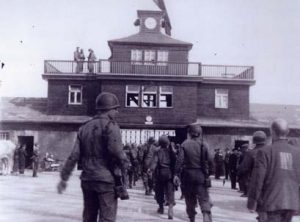 George S Patton, liberated the Buchenwald concentration camp. Just before the Americans arrived, the camp had already been taken over by the Communist prisoners who had killed some of the guards and forced the rest to flee into the nearby woods. They knew the end was near for them anyway, and there seemed no further reason to stand and fight. I suppose that the fact that the guards had deserted their posts, made it possible for just four soldiers to take over and liberate the camp. On the morning of April 12, 1945, soldiers of the 80th Infantry Division arrived in the nearby town of Weimar and found it deserted except for some of the liberated prisoners roaming around. The townspeople were cowering in fear inside their homes…bomb-damaged from the February 9, 1945 air raid that was to precede the liberation process. I would think that if any of them were a part of the concentration camp, there would be reason to fear the prisoners in town, because they had a reason to kill them, after all they had been through in German custody.
George S Patton, liberated the Buchenwald concentration camp. Just before the Americans arrived, the camp had already been taken over by the Communist prisoners who had killed some of the guards and forced the rest to flee into the nearby woods. They knew the end was near for them anyway, and there seemed no further reason to stand and fight. I suppose that the fact that the guards had deserted their posts, made it possible for just four soldiers to take over and liberate the camp. On the morning of April 12, 1945, soldiers of the 80th Infantry Division arrived in the nearby town of Weimar and found it deserted except for some of the liberated prisoners roaming around. The townspeople were cowering in fear inside their homes…bomb-damaged from the February 9, 1945 air raid that was to precede the liberation process. I would think that if any of them were a part of the concentration camp, there would be reason to fear the prisoners in town, because they had a reason to kill them, after all they had been through in German custody.
Recently, I found out that General George S Patton was my 8th cousin twice removed, on my grandmother, Hattie Pattan Byer’s side. I had always suspected a relationship there, with my grandmother’s maiden name being Pattan, but I didn’t expect it in the way it came about, since it is from my grandmother Elizabeth Shuck, who married my grandfather David Pattan, and not from the Pattan side outright. I have always liked General 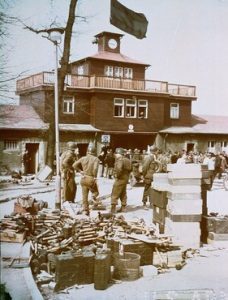 Patton, and I think it is really awesome that he is related to my family. In my opinion, he was an amazing general. He served as a commissioned officer in the United States Army for 36 years. He served in three major conflicts (Mexican Punitive Expedition, World War I and World War II) during his military career. He was awarded with the Distinguished Service Cross with one oak leaf cluster, the Army Distinguished Service Medal with two oak leaf clusters, the Navy Distinguished Service Medal, the Silver Star with one oak leaf cluster, the Legion of Merit, the Bronze Star Medal, the Purple Heart, the Silver Lifesaving Medal, the Mexican Border Service Medal, the World War I Victory Medal with four bronze campaign stars, the American Defense Service Medal, the European-African-Middle Eastern Campaign Medal with one silver and two bronze campaign star, the World War II Victory Medal, and posthumously…the Army of Occupation Medal with Germany clasp. That’s quite a war record. I’m sure the prisoners that he liberated felt that he very much earned them for his war skills.
Patton, and I think it is really awesome that he is related to my family. In my opinion, he was an amazing general. He served as a commissioned officer in the United States Army for 36 years. He served in three major conflicts (Mexican Punitive Expedition, World War I and World War II) during his military career. He was awarded with the Distinguished Service Cross with one oak leaf cluster, the Army Distinguished Service Medal with two oak leaf clusters, the Navy Distinguished Service Medal, the Silver Star with one oak leaf cluster, the Legion of Merit, the Bronze Star Medal, the Purple Heart, the Silver Lifesaving Medal, the Mexican Border Service Medal, the World War I Victory Medal with four bronze campaign stars, the American Defense Service Medal, the European-African-Middle Eastern Campaign Medal with one silver and two bronze campaign star, the World War II Victory Medal, and posthumously…the Army of Occupation Medal with Germany clasp. That’s quite a war record. I’m sure the prisoners that he liberated felt that he very much earned them for his war skills.

